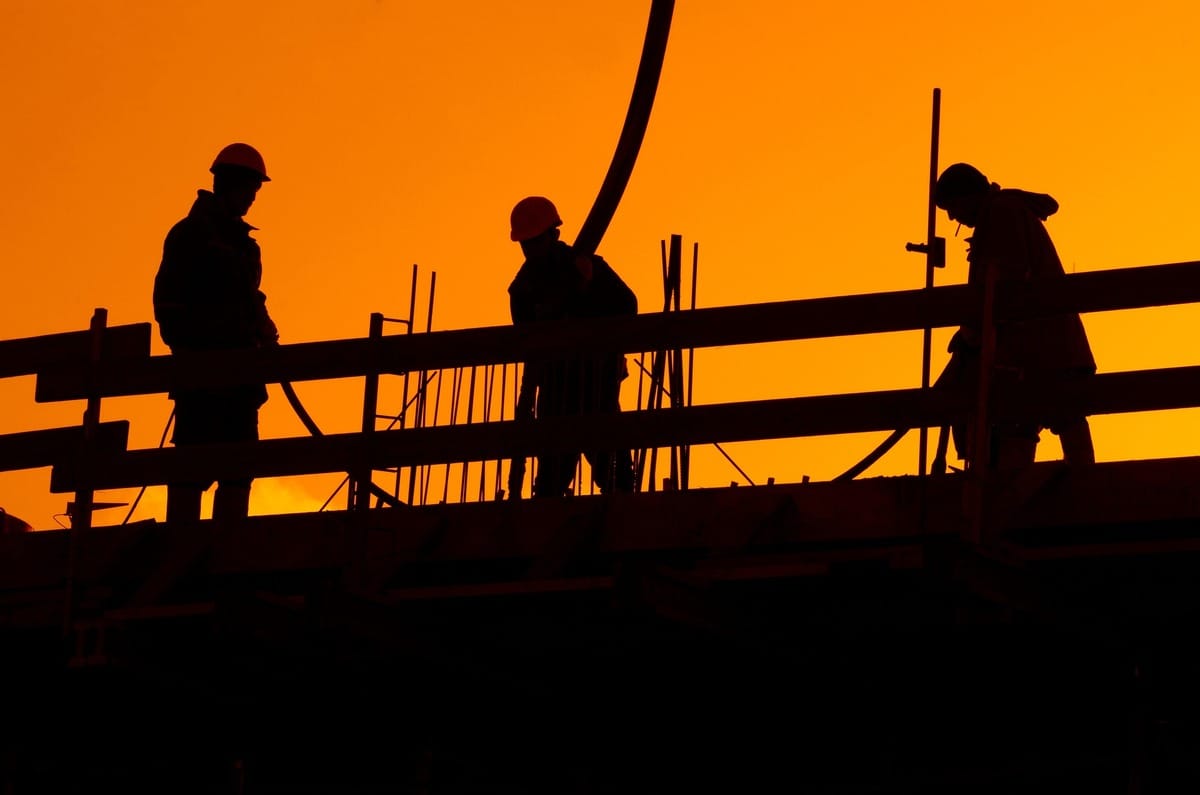- Full Brim Safety
- Posts
- Specific Fall Hazards and Protection Strategies
Specific Fall Hazards and Protection Strategies
Full Brim Safety: Build Smart, Build Safe

Specific Fall Hazards and Protection Strategies
Welcome back, let's Build Smart & Build Safe! We've covered the ABC’s of your PFAS and the importance of strong anchors and connecting devices. Today, we're focusing on specific fall hazards commonly found on job sites and the primary protection strategies for each.
Identifying these unique risks and knowing the required controls is crucial to preventing falls from various elevated work areas.
1. Leading Edges: The Dynamic Danger Zone
What it is: Any unprotected edge of a floor, roof, or formwork that changes as work progresses (e.g., as decking is installed).
The Hazard: High risk of falling as there's no fixed barrier.
Protection: Workers at a leading edge must be protected by guardrail systems, safety net systems, or PFAS.
2. Floor Openings: Hidden Traps
What it is: Any hole or opening (e.g., for pipes, ducts, access) in a floor, roof, or walking/working surface from which a worker could fall.
The Hazard: Easy to step into if unnoticed or unguarded.
Protection:
Covers: Must be strong enough to support maximum intended load, secured to prevent displacement, and clearly marked "HOLE" or "COVER."
Guardrails: Around the opening if a cover isn't feasible or during active work.
3. Roofing Work: Varied Risks, Specific Solutions
Low-Slope Roofs (less than 4:12 pitch): Workers must be protected by guardrail systems, safety net systems, PFAS, or a warning line system (often combined with a safety monitor).
Steep Roofs (4:12 pitch or greater): PFAS is generally required, as other systems may not be practical or sufficient.
The Hazard: Slippery surfaces, unstable edges, and rapid descent potential.
4. Open-Sided Floors, Platforms, & Runways:
What it is: Any floor, platform, or runway (e.g., elevated walkways) 6 feet or more above a lower level that has an unprotected side or edge.
The Hazard: Direct fall risk from the side.
Protection: Must be protected by guardrail systems or safety net systems. PFAS can also be used.
5. Skylights and Other Holes:
The Hazard: Skylights, especially translucent ones, can be mistaken for solid surfaces, leading to falls through.
Protection: All skylights and other holes must be protected by covers strong enough to prevent a fall through, or by guardrail systems around them.
Identifying these specific hazards and knowing the required protective measures is crucial. Never assume a surface is safe until it's been properly assessed and protected. Tomorrow, on Fall Protection Friday, we'll discuss the critical next step after a fall is arrested: rescue and the dangers of suspension trauma.
Don't forget to sign your friends up for Full Brim Safety for your daily dose of construction safety tips!
-The Safety Man
